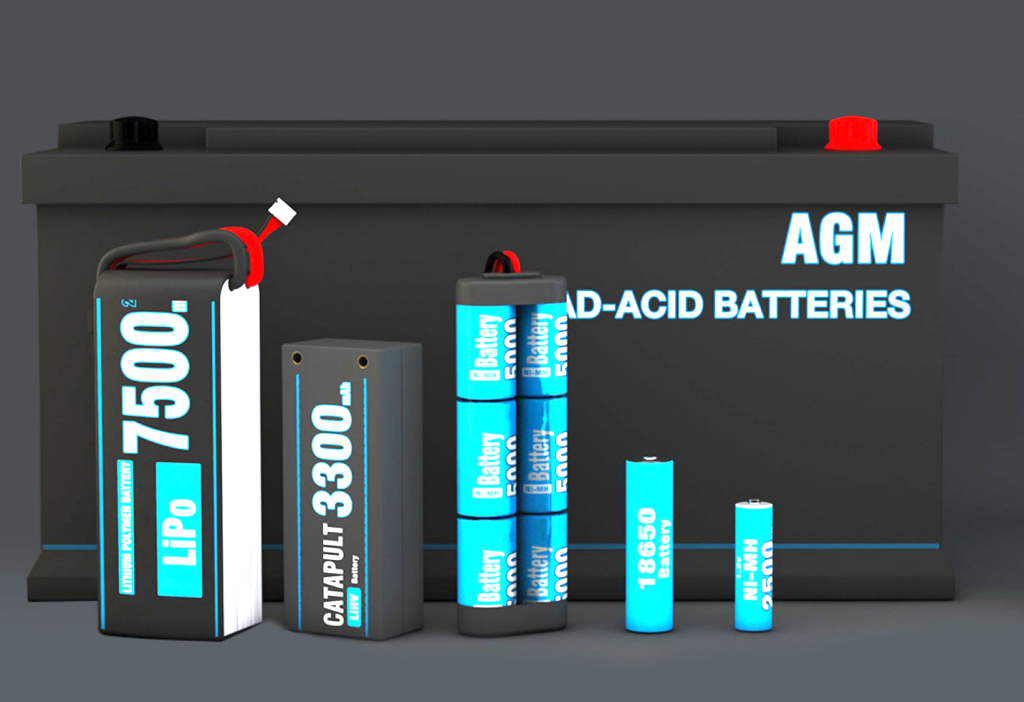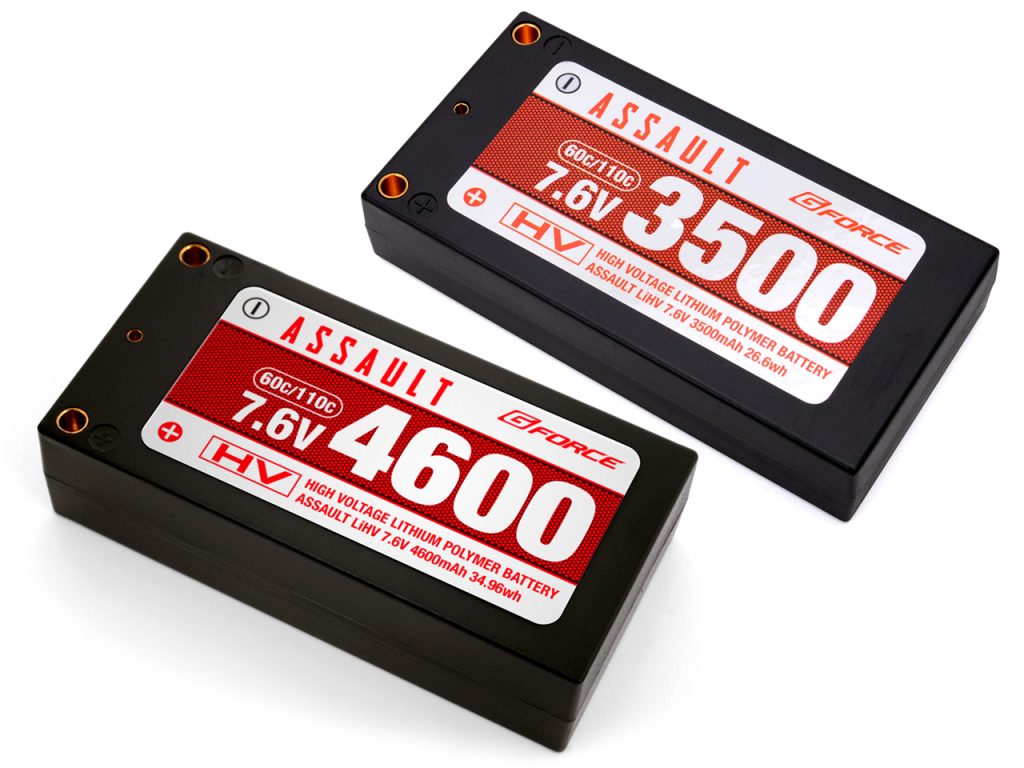Introduction: Welcome to the electrifying world of RC models! Whether you’re racing cars, piloting drones, or sailing RC boats, the heartbeat of your craft lies in its battery. Today, we’ll compare the most common types of RC batteries – LiPo, LiHV, LiFe, LiIon, NiMH, NiCd, and Pb – to help you choose the perfect power source for your needs.

Lithium Polymer (LiPo) Batteries
- Capacity: High energy density, offering more capacity for less weight.
- Voltage: Typically 3.7 volts per cell.
- Weight: Very lightweight, ideal for performance-oriented RC models.
- Maintenance: Requires careful handling; prone to damage if overcharged, discharged too low, or physically damaged.
- Usage: Dominant in RC cars, drones, and airplanes where performance and weight are critical.
- Safety: Risk of fire and explosion if not used or charged correctly.

Lithium High-Voltage (LiHV) Batteries
- Capacity: Similar to LiPo batteries but with the ability to store more energy due to higher charge voltage.
- Voltage: Can be charged up to 4.35 volts per cell, compared to the 4.2 volts of standard LiPo cells.
- Weight: Comparable to LiPo batteries, providing a high energy density for less weight.
- Maintenance: Requires a compatible charger capable of charging to higher voltages, and like LiPo batteries, they need careful handling.
- Usage: Ideal for performance-oriented RC enthusiasts who need extra power and longer run times.
- Safety: Should be handled with the same precautions as standard LiPo batteries to minimize risks of fire or damage.
- Cost: Generally more expensive than standard LiPo batteries due to their enhanced performance features.

Lithium Iron Phosphate (LiFe) Batteries
- Capacity: Less energy-dense than LiPo, but safer and with a longer lifespan.
- Voltage: About 3.2 volts per cell.
- Weight: Heavier than LiPo, but with better safety and longevity.
- Maintenance: Less prone to damage from overcharging or deep discharging.
- Usage: Chosen for applications where safety and durability are preferred over maximum power and light weight.
- Environmental Impact: More environmentally friendly than other lithium-based batteries.

Lithium-Ion (Li-Ion) Batteries
- Capacity: Similar to LiPo but typically used in formats that prioritize consistent discharge rates over high bursts.
- Voltage: Around 3.7 volts per cell.
- Weight: Lighter than NiMH and NiCd, slightly heavier than LiPo.
- Maintenance: Requires careful charging and storage.
- Usage: Used in some RC models and electronic devices.
- Safety: Can overheat and catch fire if damaged or improperly handled.
.
Nickel-Metal Hydride (NiMH) Batteries
- Capacity: Higher than NiCd, with a wide range of capacities available.
- Voltage: Similar to NiCd, around 1.2 volts per cell.
- Weight: Lighter than NiCd but heavier than lithium-based batteries.
- Maintenance: Less prone to memory effect but should be stored properly to extend lifespan.
- Usage: Popular in hobbyist and entry-level RC applications.
- Environmental Impact: More environmentally friendly than NiCd.

Nickel-Cadmium (NiCd) Batteries
- Capacity: Typically lower than other modern battery technologies.
- Voltage: Average nominal voltage is around 1.2 volts per cell.
- Weight: Heavier compared to LiPo and LiFe batteries of similar capacity.
- Maintenance: Suffer from memory effect; require periodic full discharges.
- Usage: Less common now due to environmental concerns and advancements in battery technology.
- Environmental Impact: Contain cadmium, which is toxic and requires special disposal.
Lead-Acid Batteries
- Capacity: Lower energy density.
- Voltage: Varies, but 2 volts per cell is standard.
- Weight: Very heavy, limiting their use to larger models.
- Maintenance: Relatively low maintenance but should be kept charged and used regularly to avoid sulfation.
- Usage: Often used in large-scale RC models like boats and large planes.
- Cost: Generally cheaper and with a longer lifecycle.
Comparison: In terms of energy density, LiPo and LiHV lead the pack, followed by LiIon, with LiFe, NiMH, NiCd, and Pb trailing behind. Safety-wise, LiFe batteries are the least volatile, whereas LiPo and LiHV require more caution. Lifespan goes to LiFe and NiMH for their robustness, and when it comes to performance under various loads, LiPo and LiHV excel due to their higher discharge rates.
Conclusion: Choosing the right battery is crucial to getting the most out of your RC experience. Consider the trade-offs between energy density, safety, lifespan, and performance to find your ideal match. And for the charging aficionados out there, fear not – most SkyRC chargers are versatile warriors, capable of handling all these different types of batteries with ease. SkyRC’s latest Q200neo charger is your ultimate companion. With 4 independent charging ports, the Q200neo allows you to charge four different types of batteries simultaneously. Whether it’s LiPo, LiHV, NiMH, or any other type, the Q200neo has got you covered, streamlining your charging process and getting you back into action faster.
Power up with confidence and let the adventures begin with SkyRC!
